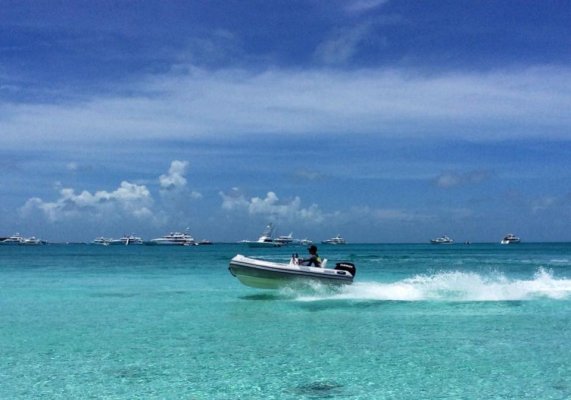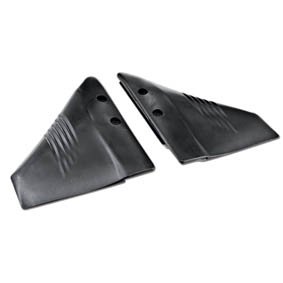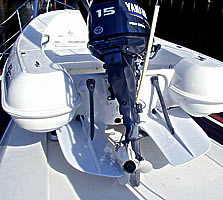hollywood8118
Guru
- Joined
- Nov 16, 2009
- Messages
- 2,381
- Location
- USA
- Vessel Name
- " OTTER "
- Vessel Make
- Ocean Alexander Europa 40
rClark246,
Yes.
The outflow of water aft of the transom is not parallel to the boats keel, bottom or horizon. The water has been pushed down by the boat and is in the process of rising up (or leaping up may be more accurate) immediately after it leaves the bottom of the boat at the transom. It's close to parallel to the horizon but not.
So for the prop it's most efficient w the engine tilted very slightly up ... w the top of the engine slightly closer to the bow. One should tilt up also to compensate for the angle of attack of the hull and slightly more for the rising water.
If one's boat is trimmed badly (as many or for some types most) w too much angle of attack the hull has so much drag that extreme OB tilt angles are needed to reduce the hull drag enough to achieve a planing attitude and speed. RIBs are so short and wide that a reasonable planing attitude is hard to achieve. Trimming the boat w weight and balance is preferable but if that fails draggy cavitation fins and power reducing trim angles may override all else and plane the boat.
If one has reasonable length to beam ratios. hard chines and reasonable trim weight wise planing is easily attained.
I think you have is backwards...
Most of the time if a dinghy has a high bow attitude the motor needs to be trimmed fully down.
The only way a motor needs to be trimmed up is way too much weight in the bow ( move aunt Bertha closer to the stern).
Remember that the hull is trying to climb uphill to get on plane.. trimming up causes the weight to be astern , causing the hull to squat further.
I thoroughly dislike 4 strokes that are under 30hp.. too heavy for most all dinghy's. We had a 10' Zodiac,10hp 2 smoke Yamaha with a wood bottom that coulg plane 4 adults as long as a couple would hang over the bow until on plane.. with 3 it climbed up without gymnastics.
HOLLYWOOD




